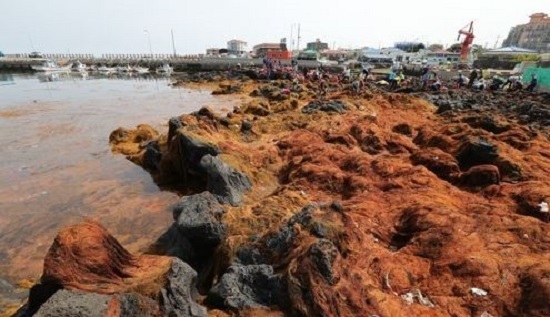JEJU -- A highly invasive macroalgae species which has impacted the waters off South Korea's largest island of Jeju comes from an east Chinese archipelago, a local think tank said Monday.
The South Korean resort island is plagued in spring and summer by inflows of the alien seaweed, known as Sargassum horneri, which smells bad and ruins the landscape.
In a report, the Jeju Research Institute confirmed that the algae drifts into Jeju waters from the Zhoushan Islands, an archipelago in the east Chinese province of Zhejiang, where the algae is cultivated as part of efforts to improve the offshore ecosystem and fishery resources.

This undated file photo shows the highly invasive alga Sargassum horneri washed ashore on South Korea`s largest island of Jeju. (Yonhap)
Laminae of the algae in Chinese waters move northward riding the Kuroshio Current, the western boundary current of the Northwest Pacific, before flowing into the waters off Jeju's southwestern coast through the warm current between the southwestern Japanese main island of Kyushu and South Korea's southeastern edges, it said.
Inflows of the seaweed into Jeju came to 12,100 tons in 2015 and 4,418 tons in the first half of this year.
The research institute proposed that South Korea come up with measures to prevent the invasive algae from reaching the country through Seoul-Beijing maritime ministerial talks.
It also called for the establishment of a system through which they can be collected promptly when they start to come into the country's waters. (Yonhap)






